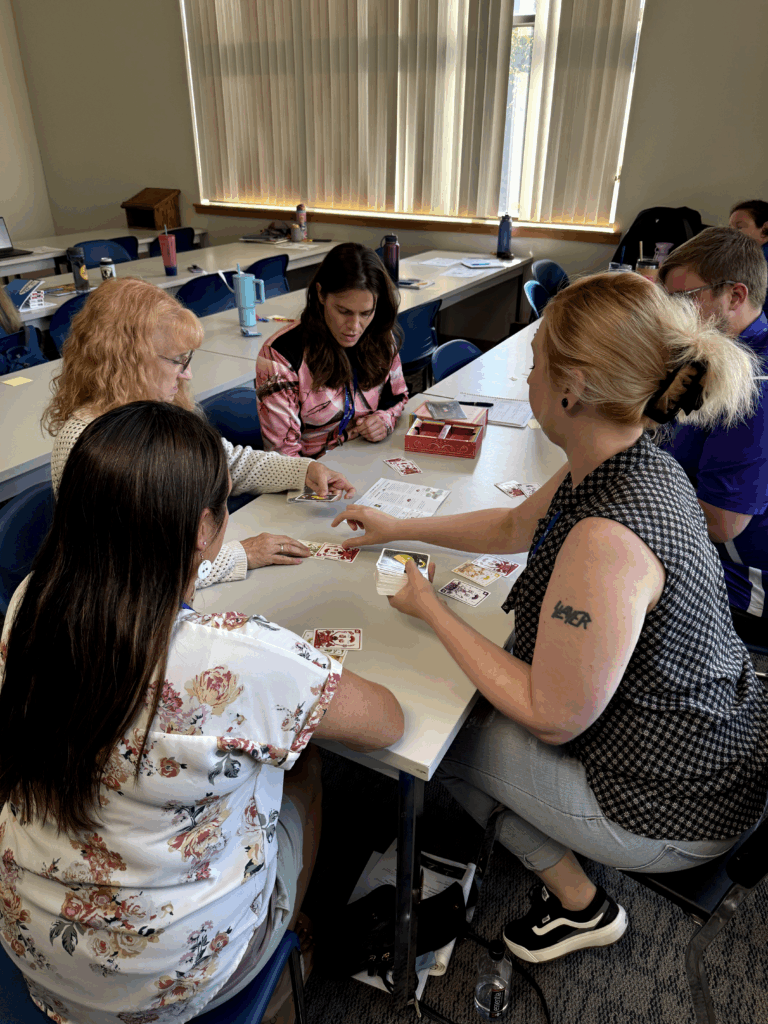The big picture: At least 27 school districts across Idaho are asking local voters to fund more than $220 million in critical education needs in their communities at the ballot box on May 20.
How we got here: Bonds and levies are crucial to school success because the Idaho Legislature does not provide enough funding to meet the needs of the state’s public schools.
What you can do: See if there is a local bond or levy on the ballot in your area by checking the list below — and then vote (and tell your colleagues, friends and family to vote) on May 20. Check your voter registration status here.
Voices from around the state: IEA Reporter contacted union locals to get a better idea of what’s really behind the numbers in their district.
Marsh Valley School District
The ask: $1.75 million for a supplemental levy

A bit about Marsh Valley: Christa McKee, co-president of the Marsh Valley Education Association, said the small rural district southeast of Pocatello has three traditional public elementary schools, one charter school, a middle school and a high school. It serves the communities of Arimo, Inkom, Downey, Lava Hot Springs and McCammon.
What’s at stake: The district says that if the levy passes, $1.38 million of the $1.75 million will be used for salaries, with the additional funds going to special education, summer school, and gifted and talented funding. If the levy does not pass, it will trigger cuts and freezes, including:
• 1 administrator
• 3 educator positions
• Elementary classes will be combined into multi-grade classrooms
• No athletics subsidies
• Frozen salaries
• No leadership premiums
• $87,000 in classified cuts
• McKee said half-time Kindergarten has also been floated as an option
The real impact: McKee said combining grades would be a huge challenge for MVEA members.
• “This is not a good choice for our district,” she said. “It burns teachers out quickly and students do not get the best education that they could — it’s a bad choice for parents, students and educators. Can you imagine planning for two different grades on all subjects with no prep time? There is also the possibility that schools may be closed or combined.”
The current climate: School consolidation, which district leaders have previously advanced as a possibility if Marsh Valley can’t meet its needs, has been contentious.
• “There are some very strong feelings on both sides,” McKee said. “The proposed school consolidation has many in each town (the district serves) upset.”
How the vote may affect bargaining: McKee said MVEA is hoping to start negotiations for non-salary and benefit items, then wrap up after the May 20 election.
• “However, depending on the results of the levy, the district may have to make some drastic changes in our schools,” McKee said. “We will have to wait until they have made those decisions before we can move forward with finishing negotiations.”
• Anxiety is creeping in among MVEA members, McKee said. “Our teachers are scared,” she said. “They are worried that they may not have a job. They are worried that they may have to teach a multi-grade class, which causes stress and anxiety for both teachers and students. They are worried that there are forces who would like all the communities to move to charter schools and dissolve the district altogether.”
The solidarity MVEA needs: “I always encourage everyone to vote every time,” McKee said. “Without the levy, things may be dire. Our parents may be looking for other opportunities for learning for their children, such as online or in a neighboring district.”
Zoom out: Tortuous decisions like the ones facing Marsh Valley could be avoided if the Idaho Legislature simply lived up to its constitutional duty. As McKee noted, the district does not have any major industry or businesses to offset the cost of funding public education — making every levy vote a crisis.
Filer School District
The ask: $52 million bond
A bit about Filer: The small, rural district is 10 miles west of Twin Falls in Southern Idaho. There are five schools in the district, which is located in the rapidly growing Magic Valley and serves just over 1,500 students.

How Filer got here: “It is impossible to ignore that we are experiencing major growth,” said Christine Knight, co-president of the Filer Education Association. “There is also the realization that costs will likely continue to rise.”
• The decisions about which projects to fund with bond money were made by community-led committees.
What’s at stake: The community-led committees recommended the following, which are now part of the bond ask:
• A new middle school ($41.1 million)
• A new track and field complex located at Filer High School, plus career and technical education improvements ($1.5 million)
• A multipurpose facility ($9.4 million)
The real impact: The current middle school dates back to 1943, Knight said, and can’t accommodate the technology needed to educate the 263 students who use it.
• Plus, it’s dangerous: The middle school is on Highway 30, which is far more heavily traveled than it used to be. The new school would make it safer for students to be dropped off and picked up.
• “This space also adjoins our current Elementary school and Intermediate School which will create a three-school campus,” Knight said. “In addressing overcrowding in the elementary school, we will move third grade to the intermediate school, leaving Pre-K through 2nd grades and providing much-needed space. The intermediate school would host 3rd through 5th grades, and 6th grade would be moved to the new proposed location to create a 6th-8th grade school.”
• The current athletics facilities are a hazard, too, Knight says: the high school track is no longer safe for competition and the football field has an uneven playing surface.
• If the bond passes, Filer’s super-popular Future Farmers of America program would have new and better space to operate. “We currently have 260 students enrolled in FFA, which shows the need to keep these programs updated and supported,” Knight said.
The current climate: It’s a difficult sell, Knight said, especially because two bonds in 2019 failed. But the numbers don’t lie: Filer is growing, with more than 200 homes going up, subdivisions flourishing outside the city limits, and younger people moving into town. So far, attendance at five community events about the bond has been great, Knight said.
• “The proverbial ‘kicking the can down the road’ is not something we want to see with this bond,” she said.
• FEA has turned out in force to get the bond over the finish line, Knight said. “We have attended several bond meetings, invited the Bond Committee co-chairs to a member meeting to inform and allow the members to ask questions, put vote yes signs in our yards, and plan to do some phone banking this week.”




